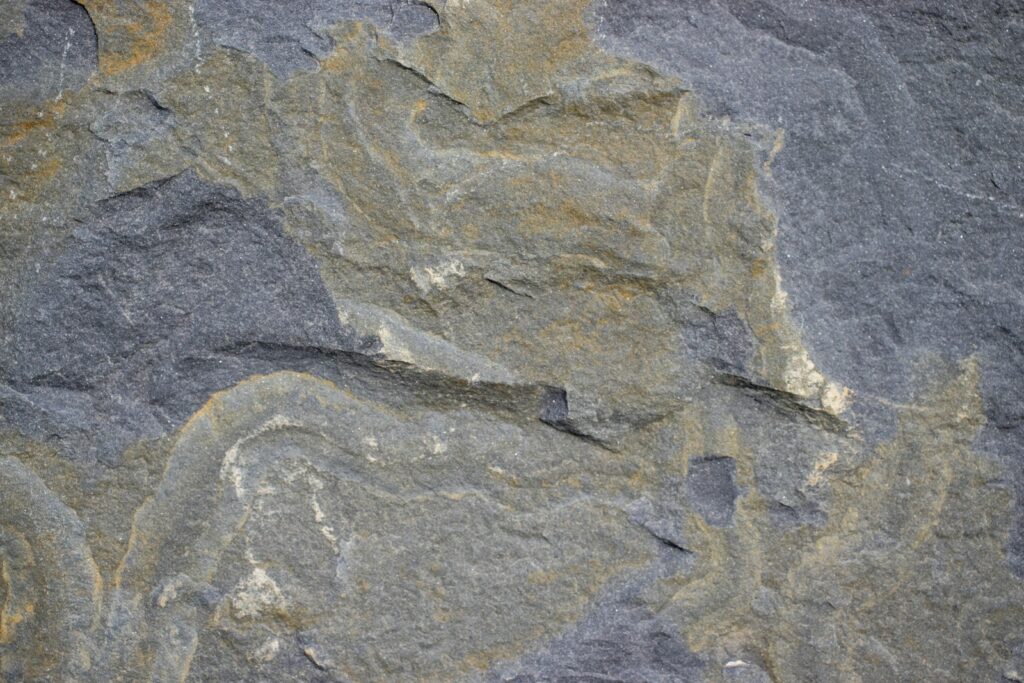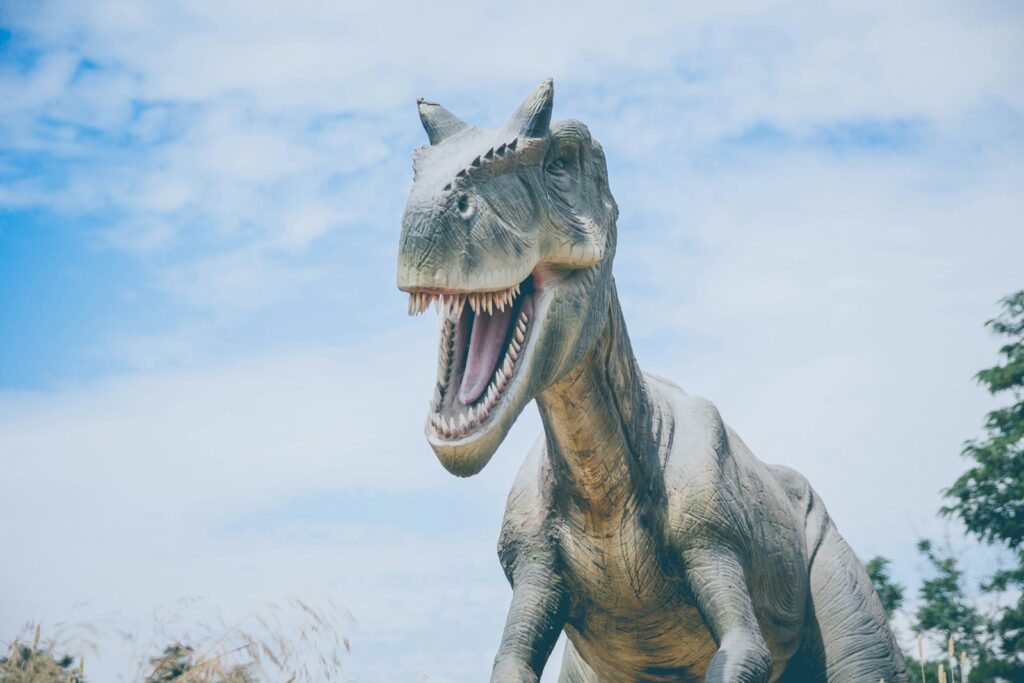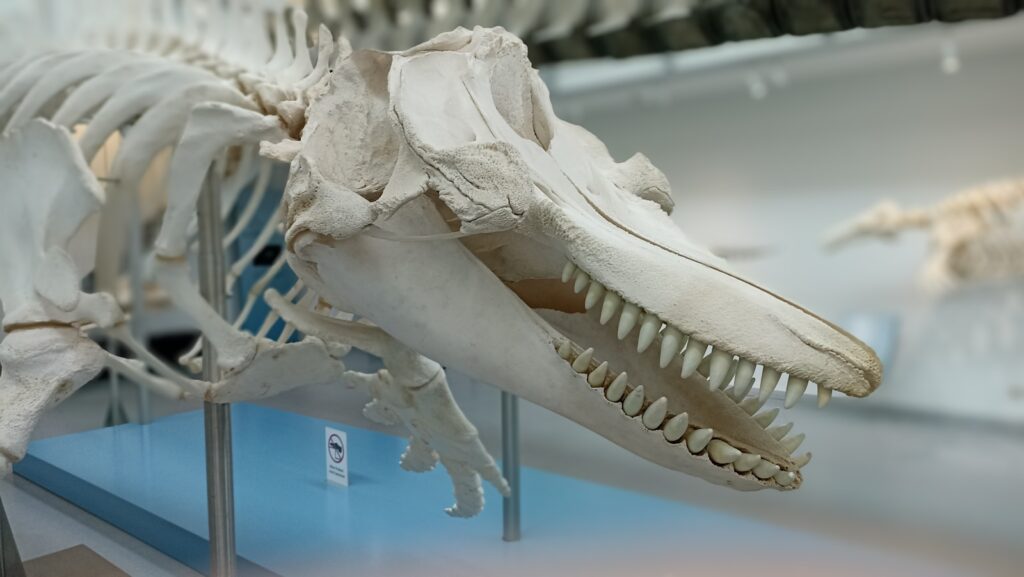The ancient oceans harbored creatures that would seem almost mythical by today’s standards. Among these prehistoric leviathans was a fish with a bite so powerful it could crush bones and shells with ease. Dunkleosteus, a formidable armored fish that ruled the seas during the Late Devonian period, possessed one of the most devastating bite forces in the fossil record. This remarkable predator has fascinated paleontologists and marine biology enthusiasts for generations, offering a glimpse into a time when the oceans were dominated by creatures vastly different from those we know today. Let’s dive deep into the world of this prehistoric bone-crusher and explore what made it one of history’s most fearsome marine predators.
The Devonian Titan: Introduction to Dunkleosteus

Dunkleosteus lived approximately 382-358 million years ago during the Late Devonian period, an era often referred to as the “Age of Fishes.” This massive predator belonged to a group called placoderms, which were among the first jawed vertebrates on Earth. Growing to lengths of up to 20 feet (6 meters) and weighing an estimated one ton, Dunkleosteus was among the apex predators of its time. Its remains have been found across North America, Europe, and Morocco, indicating a widespread distribution in the ancient Devonian seas. What makes this creature particularly fascinating is that despite its fearsome reputation, we know it primarily through fossilized head shields and jaw plates, as the rest of its body was composed of cartilage that rarely fossilized.
Armor-Plated Monster: The Distinctive Anatomy

Unlike modern fish covered in scales, Dunkleosteus was protected by thick bony plates that formed a solid armor around its head and thorax. This natural armor, composed of cellular bone tissue called cellular dermal bone, created an impenetrable shield against potential predators. The most striking feature of this prehistoric fish was its massive head, which made up nearly one-third of its total body length. Instead of teeth, Dunkleosteus possessed sharp bony plates in its jaws that formed self-sharpening cutting edges. These blade-like structures were arranged in a way that created four prominent “fangs” – two in the upper jaw and two in the lower jaw. The rest of Dunkleosteus’s body remains somewhat mysterious, though scientists believe it had a streamlined form ending in a powerful tail that propelled it through ancient seas.
The Bone-Crushing Bite: Unprecedented Feeding Mechanics

The most remarkable feature of Dunkleosteus was undoubtedly its incredible bite force. Scientific studies have estimated that this prehistoric fish could exert a bite force of up to 8,000 pounds per square inch (psi) at the tip of its fang-like jaw plates. This extraordinary pressure allowed Dunkleosteus to effortlessly shear through the armor plating of other placoderms and crush the shells of ammonites and other hard-shelled prey. For perspective, this bite force far exceeds that of modern predators – it’s more than twice the bite force of a saltwater crocodile and approximately five times stronger than that of a great white shark. The unique structure of its jaw joints also enabled Dunkleosteus to open its mouth extremely quickly, creating a powerful suction that likely helped draw prey into its lethal jaws before they could escape.
Evolutionary Significance: The First Super-Predator

Dunkleosteus represents a critical chapter in vertebrate evolution as one of Earth’s first apex predators with jaws. The development of jawed vertebrates was a revolutionary step in evolutionary history, opening new ecological niches and feeding strategies that weren’t previously possible. Placoderms like Dunkleosteus were among the first vertebrates to develop this crucial feature, setting the stage for the diverse array of jawed vertebrates that would follow. Their success demonstrates how effective this adaptation was, allowing them to dominate marine ecosystems for over 70 million years. Despite this long reign, placoderms eventually disappeared during the Late Devonian mass extinction event, leaving no direct descendants among modern fish. Nevertheless, the predatory innovations they pioneered – powerful jaws, specialized feeding adaptations, and apex predator status – would become recurring themes throughout vertebrate evolution.
Hunter’s Arsenal: Specialized Feeding Adaptations
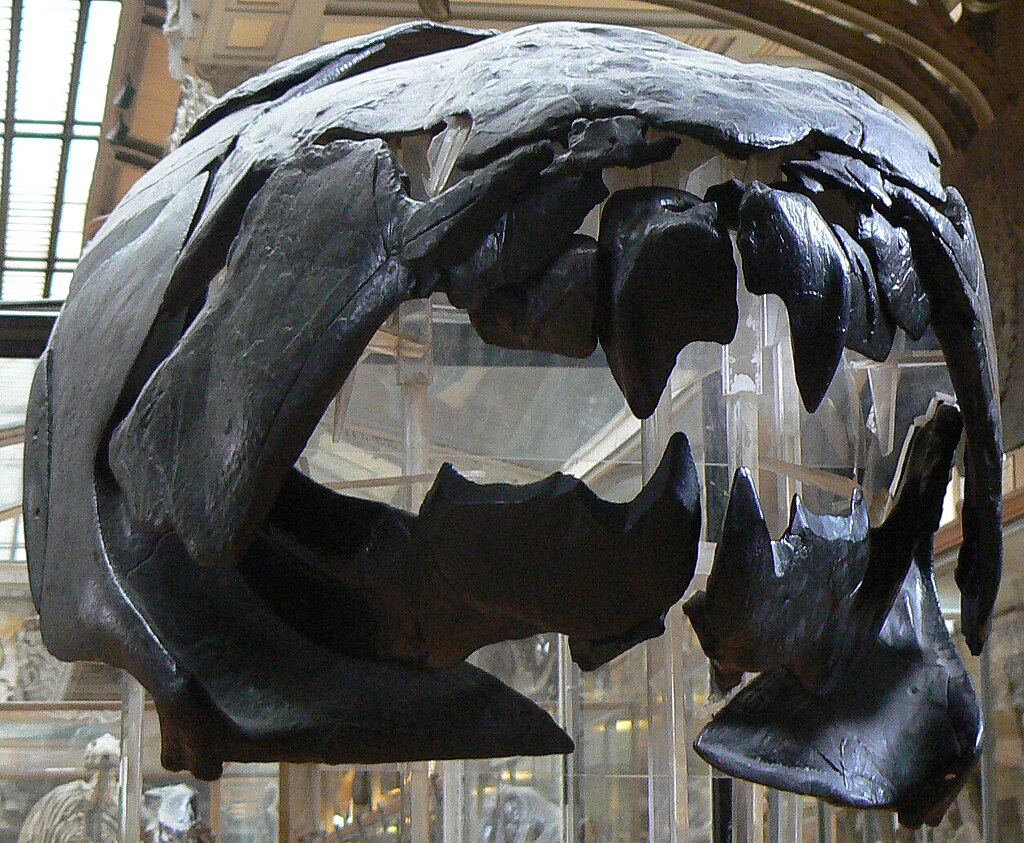
Beyond its powerful bite, Dunkleosteus possessed several specialized adaptations that made it an efficient predator. Its blade-like jaw plates maintained their sharpness through a self-sharpening mechanism – as they slid against each other during biting, they naturally honed their cutting edges. The articulation of its jaw allowed for a remarkably wide gape, enabling it to tackle large prey items that other predators couldn’t handle. Researchers have found evidence of bite marks on fossilized prey and even on other Dunkleosteus specimens, suggesting that these fierce predators may have engaged in cannibalism when opportunities arose. Perhaps most impressively, biomechanical studies indicate that Dunkleosteus could transfer nearly 100% of the muscle force generated by its jaw muscles to the tip of its biting blades, making it one of the most efficient biting machines in vertebrate history.
Reconstructing an Ancient Predator: The Fossil Record

Our understanding of Dunkleosteus comes primarily from fossilized head shields and jaw plates found in Late Devonian deposits around the world. The most complete specimens have been discovered in the Cleveland Shale formation in Ohio, which has yielded remarkably well-preserved head shields. Because the rest of its body was composed of cartilage rather than bone, complete specimens are extremely rare. Paleontologists must use comparative anatomy, biomechanical principles, and the study of related placoderms to reconstruct the complete appearance of this ancient predator. Modern digital modeling techniques have allowed scientists to create increasingly accurate reconstructions of how Dunkleosteus may have appeared and moved. These reconstructions suggest a streamlined body behind the armored head, with powerful pectoral fins and a heterocercal (shark-like) tail providing propulsion through the water.
The Ecology of a Super-Predator: Dunkleosteus’s Role in Ancient Seas

As an apex predator, Dunkleosteus played a crucial role in maintaining the ecological balance of Devonian seas. It likely preyed upon a variety of marine life, including other placoderms, early sharks, ammonites, and numerous fish species. Evidence from fossilized stomach contents and coprolites (fossilized feces) suggests that Dunkleosteus was an opportunistic predator that would consume virtually any prey it could overpower. Its ability to crush protective shells and armor plates gave it access to food sources that were unavailable to many other predators. Paleontologists believe that Dunkleosteus may have employed different hunting strategies depending on the prey – ambush tactics for faster prey and direct pursuit for slower-moving victims. The presence of such a formidable predator would have exerted significant evolutionary pressure on prey species, potentially driving the development of more effective defenses and escape mechanisms throughout the marine ecosystem.
A Day in the Life: Behavioral Insights

While behavior doesn’t fossilize, scientists can make educated inferences about how Dunkleosteus might have lived based on its anatomy and ecological context. As a large, heavily-armored predator, Dunkleosteus likely had a relatively slow cruising speed but could achieve impressive bursts of speed when attacking prey. Its powerful jaws suggest it was capable of processing food quickly, possibly consuming large quantities in a single feeding session. Some paleontologists have proposed that Dunkleosteus may have exhibited territorial behavior, particularly during breeding seasons. The presence of young Dunkleosteus fossils in certain locations suggests potential nursery areas where juveniles could develop away from adult cannibalism. Like many modern large predators, juvenile Dunkleosteus probably fed on different prey than adults, only gradually working their way up to tackling the largest and most well-defended prey species as they grew to full size.
Extinction Mysteries: The Disappearance of the Bone-Crushers

Despite their evolutionary success and dominance as apex predators, Dunkleosteus and all other placoderms disappeared from Earth’s oceans during the Late Devonian mass extinction approximately 359 million years ago. This extinction event, one of the “Big Five” mass extinctions in Earth’s history, eliminated approximately 75% of all species on the planet. Scientists have proposed several potential causes for this extinction event, including global cooling, sea level changes, widespread oceanic anoxia (oxygen depletion), and volcanic activity. As apex predators with specialized feeding adaptations, placoderms like Dunkleosteus may have been particularly vulnerable to ecosystem disruptions that affected their prey base. The ecological niches they once dominated were eventually filled by other marine predators, particularly sharks and ray-finned fishes, which would go on to diversify extensively in the aftermath of the extinction.
Modern Descendants? The Evolutionary Legacy

Despite their fearsome reputation and evolutionary success, placoderms like Dunkleosteus left no direct descendants in today’s oceans. They represented an early, experimental branch of jawed vertebrate evolution that ultimately ended without continuing lineages. However, their evolutionary innovations – particularly jawed predation – proved tremendously successful and were carried forward by other vertebrate groups. The most likely closest living relatives to placoderms would be the cartilaginous fishes (sharks, rays, and chimaeras) and bony fishes, which share a common ancestor with placoderms from the early Silurian period. Modern fishes with powerful crushing dentition, such as wolf fish, certain sharks, and some reef fishes, demonstrate how this feeding strategy continues to be effective in marine environments. While nothing alive today matches the specific bone-crushing power of Dunkleosteus, its evolutionary legacy lives on in the diverse array of jawed predators that populate modern oceans.
Dunkleosteus in Popular Culture: The Enduring Fascination

The fearsome appearance and predatory capabilities of Dunkleosteus have made it a popular subject in scientific documentaries, books, and other media focused on prehistoric life. This ancient predator has appeared in numerous television programs, including the BBC’s “Sea Monsters” and various Discovery Channel documentaries. Its distinctive armored head and powerful jaws make it instantly recognizable and visually striking. Dunkleosteus has also been featured in several video games, including “ARK: Survival Evolved,” where players can encounter and even tame virtual representations of this prehistoric predator. Museums around the world proudly display Dunkleosteus reconstructions and fossils, with particularly notable exhibits at the Cleveland Museum of Natural History and the American Museum of Natural History in New York. The enduring fascination with this ancient bone-crusher speaks to humanity’s perennial interest in apex predators and the strange, often fearsome creatures that dominated Earth before the age of mammals.
Scientific Discoveries: Ongoing Research and New Insights
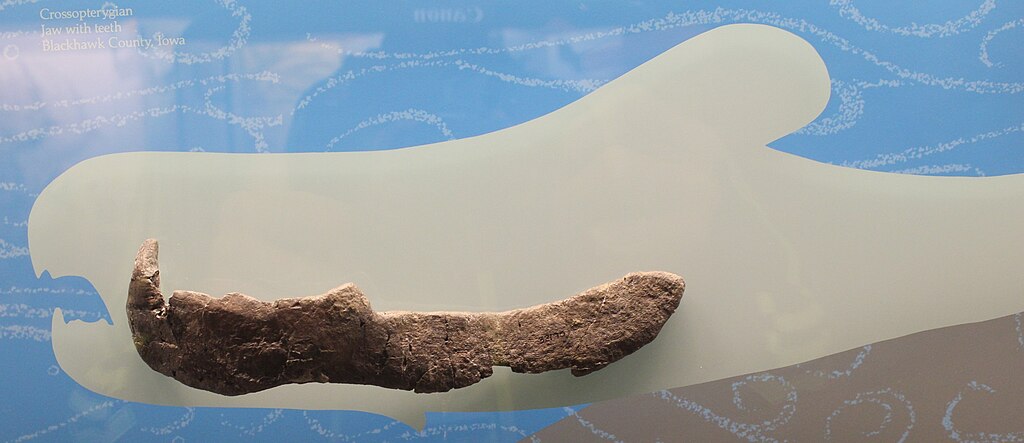
Research on Dunkleosteus continues to yield new insights about this remarkable prehistoric predator. Advances in biomechanical modeling have allowed scientists to more accurately calculate its bite force and understand the mechanical efficiency of its jaw system. Recent studies using synchrotron imaging and other advanced techniques have revealed previously unknown details about the microstructure of Dunkleosteus armor plates and jaw elements. Paleontologists continue to discover new placoderm species related to Dunkleosteus, expanding our understanding of the diversity of these ancient armored fishes. Some researchers are investigating the sensory systems of placoderms, attempting to determine how Dunkleosteus perceived its environment and located prey. Ongoing excavations in Devonian deposits worldwide hold the potential to uncover more complete specimens that could further revolutionize our understanding of this prehistoric bone-crusher and its place in evolutionary history.
Conclusion: The Legacy of an Ancient Predator
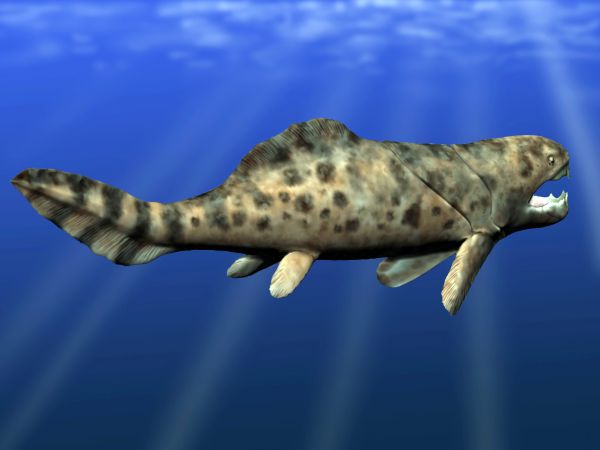
The story of Dunkleosteus provides a fascinating window into Earth’s distant past when armored fish with bone-crushing jaws ruled the oceans. Though extinct for over 350 million years, this remarkable predator continues to captivate scientists and the public alike with its extraordinary adaptations and fearsome capabilities. As a pioneer of jawed predation, Dunkleosteus represents a critical chapter in vertebrate evolution, demonstrating the effectiveness of powerful jaws and specialized feeding adaptations that would become recurring themes throughout the history of marine predators. While no direct descendants swim in today’s oceans, the evolutionary innovations that made Dunkleosteus so successful continue to influence marine ecosystems through the diverse array of predatory fishes that followed. In studying this prehistoric bone-crusher, we gain not only knowledge about Earth’s ancient past but also deeper insights into the evolutionary processes that have shaped life throughout our planet’s history.

